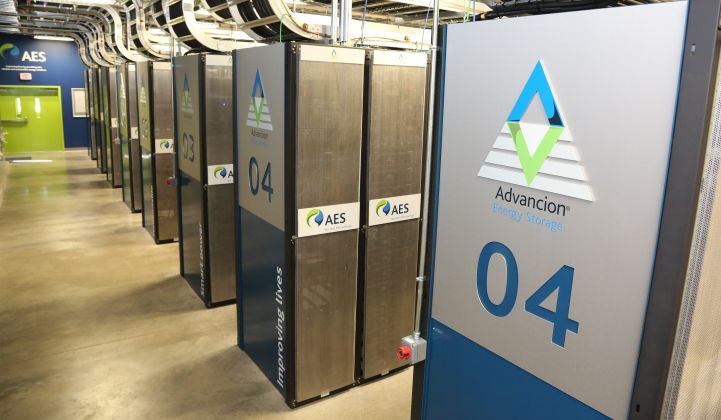India seems to be a natural target market for energy storage, with its unstable and outage-prone grid, fleets of diesel backup generators, hundreds of millions of people without access to electricity, and a big push underway to grow its share of intermittent wind and solar power.
The question, as with every other storage market, is how to find the regulatory and economic models to allow the technology to pay for itself.
That’s the goal of a 10-megawatt grid battery project announced Monday between AES Energy Storage, the world’s biggest grid battery project developer, and Panasonic, one of the world’s biggest battery makers.
By mid-2017, the partners hope to have the system up and running at Panasonic's eco-friendly Technopark appliance factory in India’s Haryana state, both to provide backup power for the facility and help stabilize and integrate renewable energy for the regional grid.
AES Energy Storage, a subsidiary of AES Corp., says it’s the first large-scale energy storage project of its kind in India. It’s also the first time that AES has taken on a behind-the-meter storage project, as opposed to the utility-scale projects it’s done so far in the U.S., South America and Europe.
It’s also the inaugural project for integrating Panasonic’s batteries into AES’ Advancion integration platform, adding the Japanese lithium-ion giant to a list of AES battery partners that already includes Samsung and LG Chem. One of the project’s goals will be to certify Panasonic’s technology for broader deployments, including opportunities in India beyond this project, Manish Kumar, AES Energy Storage’s managing director of distributed energy, said in a Monday interview.
“We will have a commercial agreement in place for providing backup services to Panasonic. This will be our foray into this segment,” he said. “But once we’ve proven the initial applications, India’s an ideal market for both behind-the-meter and front-of-the-meter applications.”
Those opportunities can be broadly sorted into three main categories, he said. The first is to provide grid reliability at a lower cost than today’s alternatives -- namely, backup generators. The Panasonic factory is “connected to the grid, which is getting better,” he said. “But they have backup diesel gensets, just like every large-scale C&I facility in India.” In that sense, AES is “sort of entering the diesel backup generator replacement market.”
The second category is to serve to smooth the integration of wind and solar power into the grid. The Panasonic factory doesn’t currently have its own solar PV system to balance, he said. But “storage can both help with the firming and smoothing of the intermittency that exists inherently in wind and solar. The more variability you have, the more flexibility you need.”
“There are multiple frameworks and contractual models that can work here,” Kumar said. “Given that our fourth-generation product is available as a technology sale, we are working with multiple wind and solar developers to sell Advancion as a technology for developing projects in India.”
India has aggressive renewable energy targets, with a goal of 160 gigawatts of renewable energy capacity by 2022, GTM Research storage analyst Brett Simon noted. That could increase the level of instability on a grid already challenged with frequent outages, and “storage can play an important role for renewable integration and increased system reliability,” Simon said.
Finally, AES is looking at providing ancillary services, such as frequency regulation, with its batteries, Kumar said. That’s something the company has plenty of experience with in its U.S. projects, he noted.
Today, India’s market constructs for these kinds of grid services are still in an early stage. Still, “We’re seeing optimism from stakeholders on the power grid side, and at the Ministry of New and Renewable Energy,” the government agency responsible for managing non-fossil fuel energy R&D, doing tenders, and incorporating energy storage for renewable integration that is also "creating a framework for a market mechanism for ancillary services and frequency regulation,” according to Kumar.
India’s energy storage potential on this front has been getting a lot of attention recently. Last month we reported on the state-run Solar Energy Corporation of India's call for up to 100 megawatts of storage capacity to bolster its planned 750-megawatt solar park at Ananthapuramu in Andhra Pradesh.
And General Electric recently announced that its energy consulting business was chosen by IL&FS, one of India's leading infrastructure developers and financiers, to examine the feasibility of integrated wind, solar and energy storage projects at sites in Andhra Pradesh and Gujarat.
India does have relatively low electricity prices, which can make the economics of energy storage challenging, according to Ravi Manghani, senior energy storage analyst at GTM Research. And while diesel backup generators aren’t the ideal solution, “the economics of customer-sited energy storage for backup power alone are not that attractive, so benefits need to be stacked up for storage to get any traction. But this announcement demonstrates that there can be creative ways to structure project deals that provide multiple benefits.”



